Pittsburgh’s Turkey Devonshire
Turkey Devonshire was added to the Wikipedia List of Sandwiches in July of 2020, and made it onto our List shortly thereafter. It is an open-faced sandwich of turkey and bacon covered in cheese sauce and broiled, and if that sounds familiar, it may be because you are already familiar with Louisville’s Hot Brown sandwich, or St. Louis’ Prosperity sandwich. Invented at Pittsburgh’s Stratford Club by restaurateur Frank Blandi in 1934 as opposed to 1926 for the Hot Brown (or “the 1920s” for the Prosperity sandwich), it certainly seems possible that the dish could have taken its cue from the more well-known Kentucky specialty.
Hal B. Klein, a Pittsburgh writer who has put far more research into this local specialty than I have, doesn’t think so. In his 2019 Pittsburgh Magazine article on the sandwich–possibly the definitive work on the subject–he stated “I haven’t found any evidence of Blandi or anyone who worked for him at the time having visited Louisville.” He goes on to note the similarity of both dishes to Welsh Rarebit, a somewhat more venerable concoction of broiled toast with cheese sauce, minus turkey or bacon or other accoutrements. He also relates a theory shared by Tim Ryan, president of the Culinary Institute of America, who believes it more likely that the dish was influenced by the famous Chicken Hash–diced chicken topped with mornay sauce–served by the 21 Club in New York City.
New York is certainly much closer to Pittsburgh than either Louisville or St. Louis, but Hal Klein likes this humbler theory, shared with him by the grand-niece of Frank Blandi, the best: “My guess, if I were betting dollars to doughnuts, is that if we’ve all busted our hump by the end of the day, setting up, cooking, cleaning up for people, you’re hungry. It’s late at night. You’d say, ‘Cook, make us something.’ The cook is tired from working all night too, so he’s not at the peak of his creativity. Well, maybe there’s some leftover turkey. Maybe there’s some gravy. And you want to fancy it up. I can see how this gets better and better as you keep playing with it over time.”
It’s a theory that could comfortably fit the Hot Brown or the Prosperity sandwich or any of the many late night open-faced piles of delicious odds and ends I found in the fridge that I myself have made over the years. Drunk food, ever so slightly elevated, you might say. This one caught on though, and peaked in popularity during the 1960s and 70s before diminishing in recent decades. Klein cites the use of processed deli-style sliced turkey–the dreaded “tryptophan-flavored jello” I endeavor to keep off these pages for the most part–and gloppy cheese-sauce-from-a-can, a similar complaint I have about many of Central Illinois’ worst Horseshoe sandwiches.
A trip to Pittsburgh was not in the cards for me this month. But many sites claim to have Blandi’s original Turkey Devonshire recipe–and they are all identical–so assuming that is somewhat legitimate (a dubious assumption on the internet) I should be able to get close. The ingredients look right, even if the ratios seem odd.
Of course first I’ll have to roast a turkey, but that is no hardship. I generally roast at least 2 “practice turkeys” during the runup to Thanksgiving in any case. I don’t really need the practice, but I do need the turkey stock I make from their carcasses for the big day. My standard method involves a 3-day dry brine, spatchcocking bird, roasting it on high heat and pulling it at a slightly lower temperature than most guidelines tell me to. Nobody has ever complained about dry breast meat.
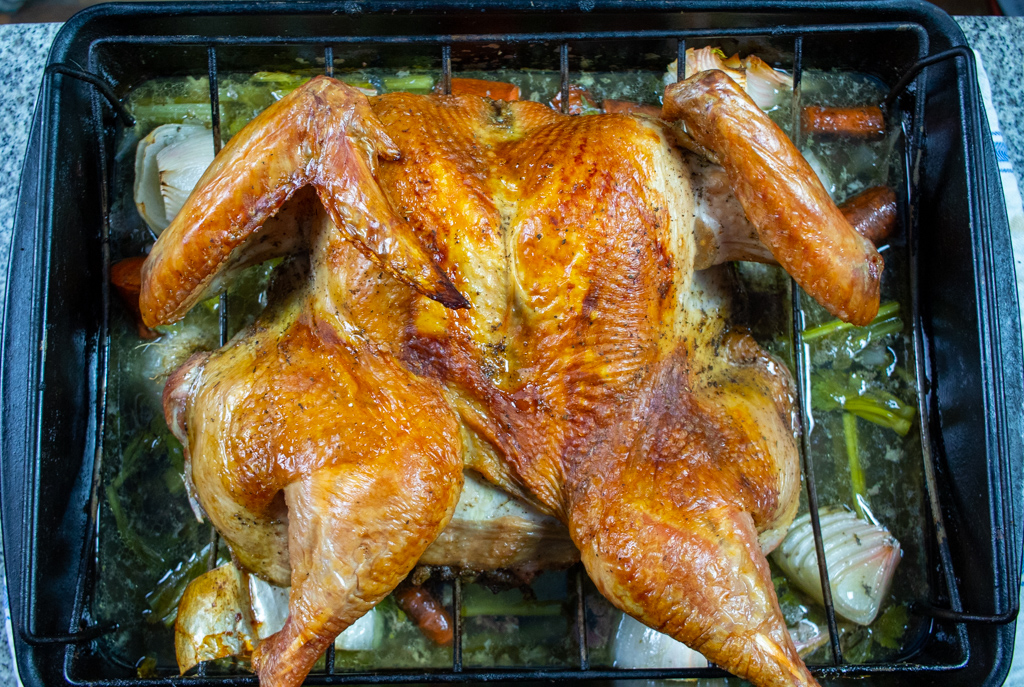
The sauce is the unique part of Turkey Devonshire, setting it apart from the Hot Brown or any other cheese-sauce doused sandwich. Where most cheese sauces might be a type of mornay sauce, cheese melted into a béchamel, the “original Blandi” recipes I’ve read start with an extremely dry roux–1 full cup of flour to 3/4 stick of butter, or more than twice as much flour as the usual 1:1 ratio. Then both milk and chicken stock is added to this roux, making it a sort of hybrid of both white and yellow gravies?




Then shredded sharp cheddar cheese is melted into the sauce. However, again the ratio is off. We have something like 5 cups of gravy at this point, and we add 4 ounces of cheese where I’d normally use in the neighborhood of 10 or 12 ounces minimum.
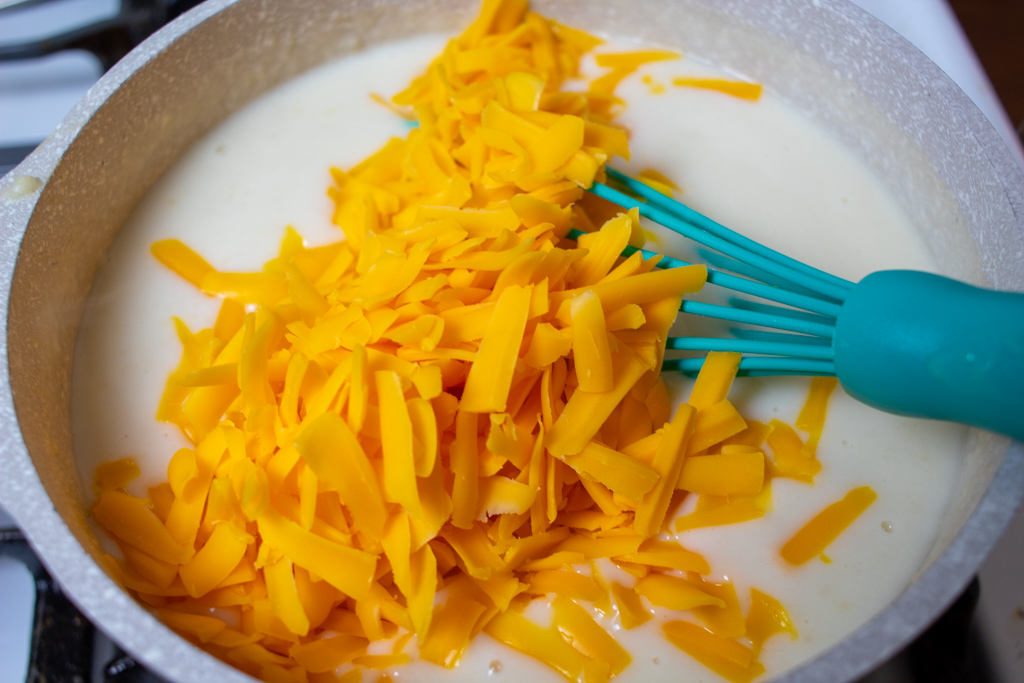
This sauce is then cooked slowly, whisking constantly, for 20 minutes or so, by which point it has thickened into something well beyond a gravy.
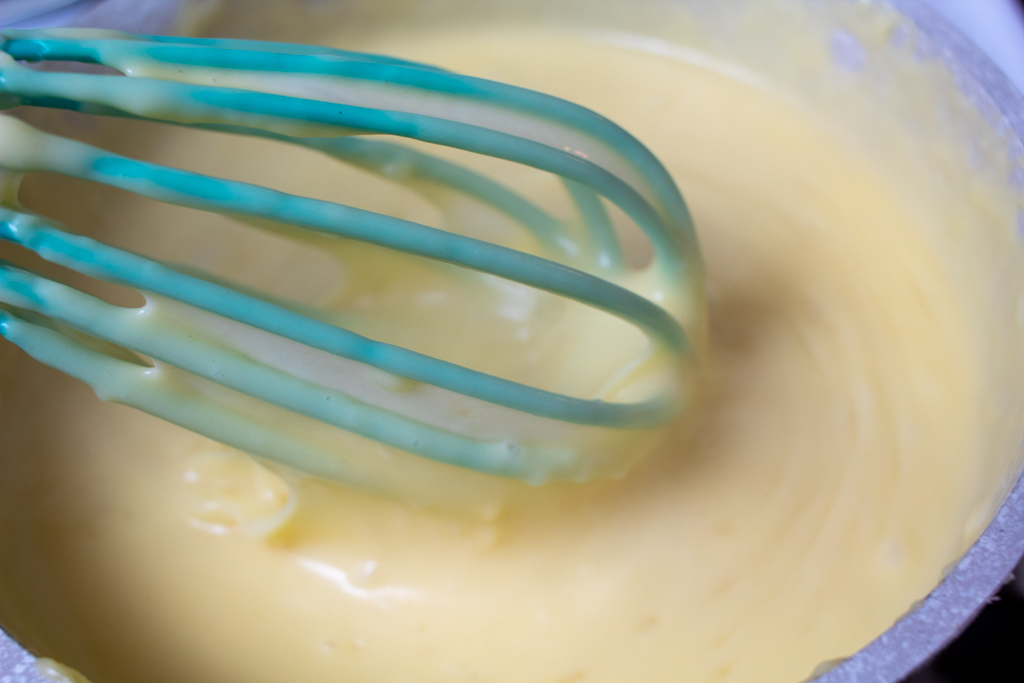
It is not pourable; it stacks rather than flattening and spreading. The recipe calls for letting it cool to room temperature and then whisking to fluff it up. By the time it reaches room temperature, it has essentially solidified.
How does it taste though? It tastes like something that can’t decide whether it is a béchamel, a gravy, or a cheese sauce and ends up being none of the above. Elements of each present themselves and are subsumed by the whole. It is not really meant for dipping tortilla chips into though, or pouring over fresh-baked biscuits. This sauce has a very specific purpose.
A Turkey Devonshire starts with toasted white bread. The recipe calls for removing the crusts, and some preparations will cut it into triangles as with the Hot Brown. Today, I am not feeling fancy.

To this, we add slices of roasted turkey–for best results, avoid that junk from the deli.
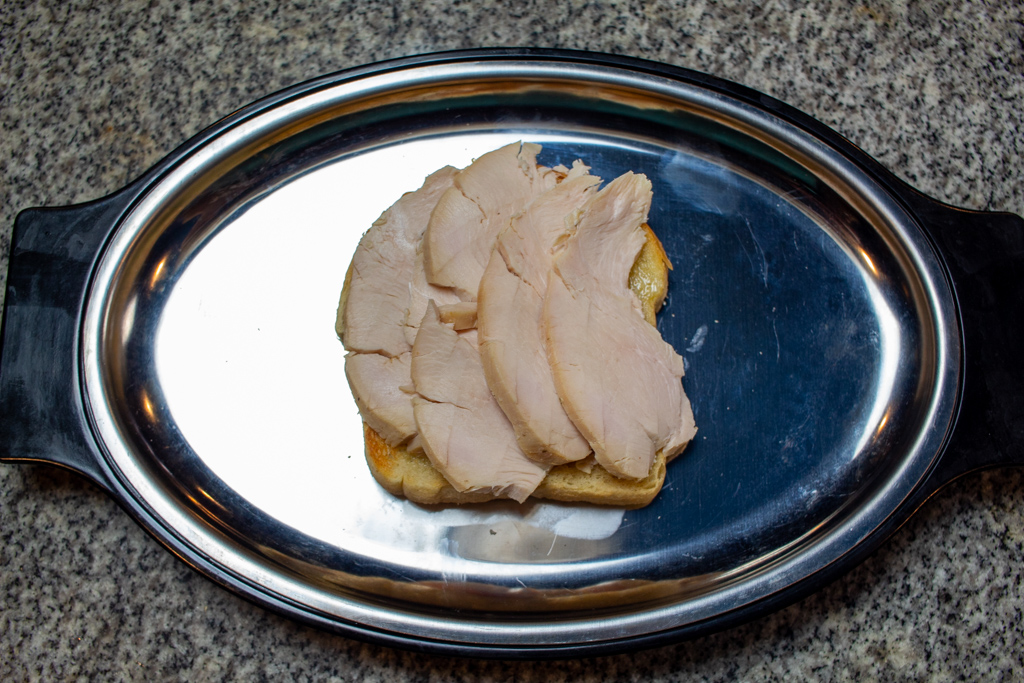
Add bacon as well, 2 slices crossed over the turkey.
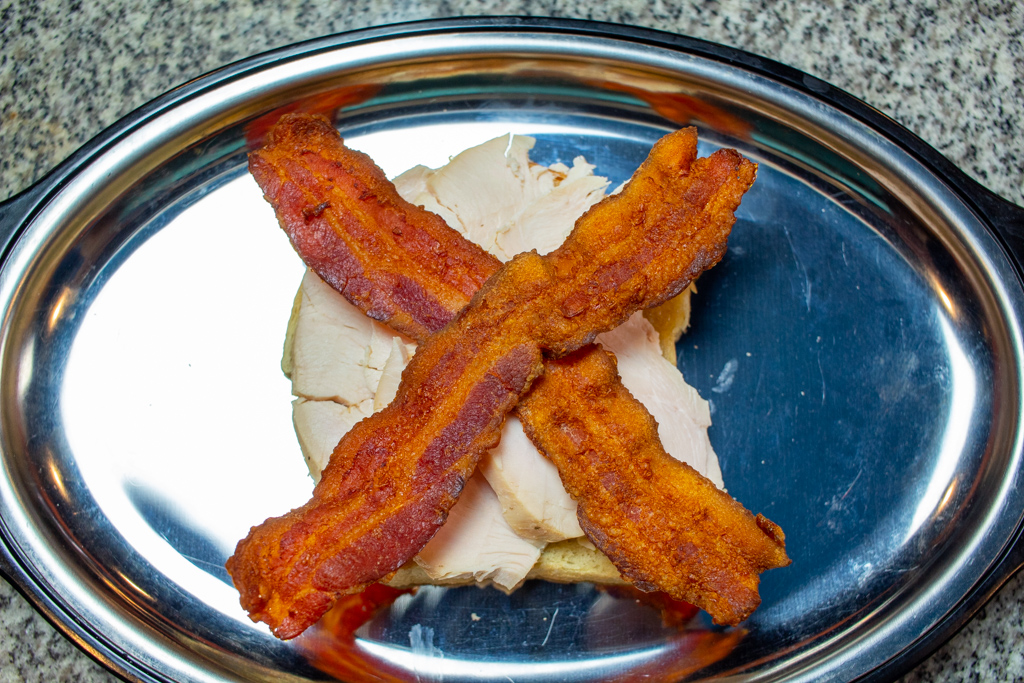
Here would be a good place to add sliced tomatoes, if you had some good ones. Tomatoes are apparently a controversial ingredient, not having been part of the original sandwich. I am with Hal B. Klein though, in that they add needed sweetness and acidity to what is otherwise an umami-bomb of a dish. In any case, I am using grape tomatoes instead of slices, which I will place atop the Devonshire sauce.
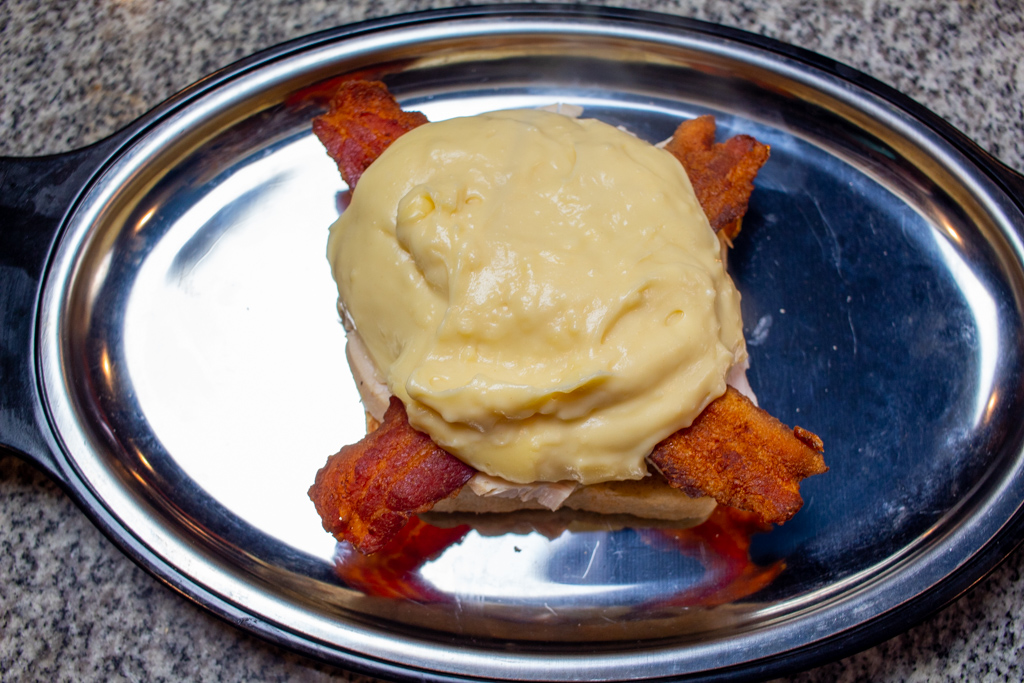
This sauce is thick. Heated, it is spreadable but still not pourable. I spooned a healthy layer on top of the bacon and then added my grape tomatoes, halved.
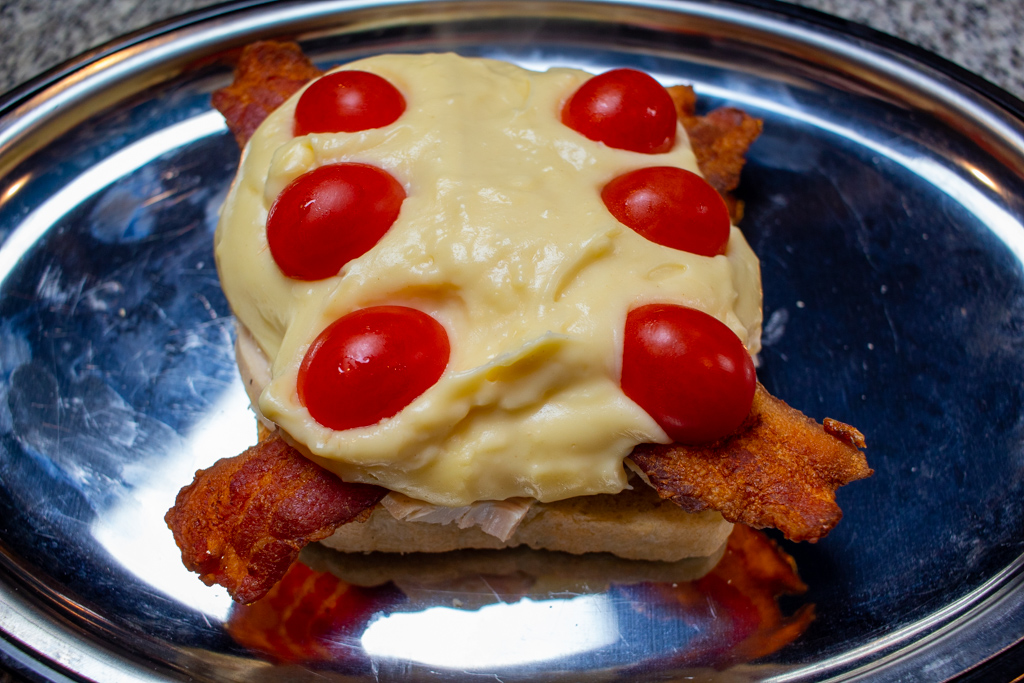
This is topped off with grated Parmesan cheese and a sprinkling of paprika before being put in the oven at 450° F for 10 or 15 minutes to brown, according to the recipe.
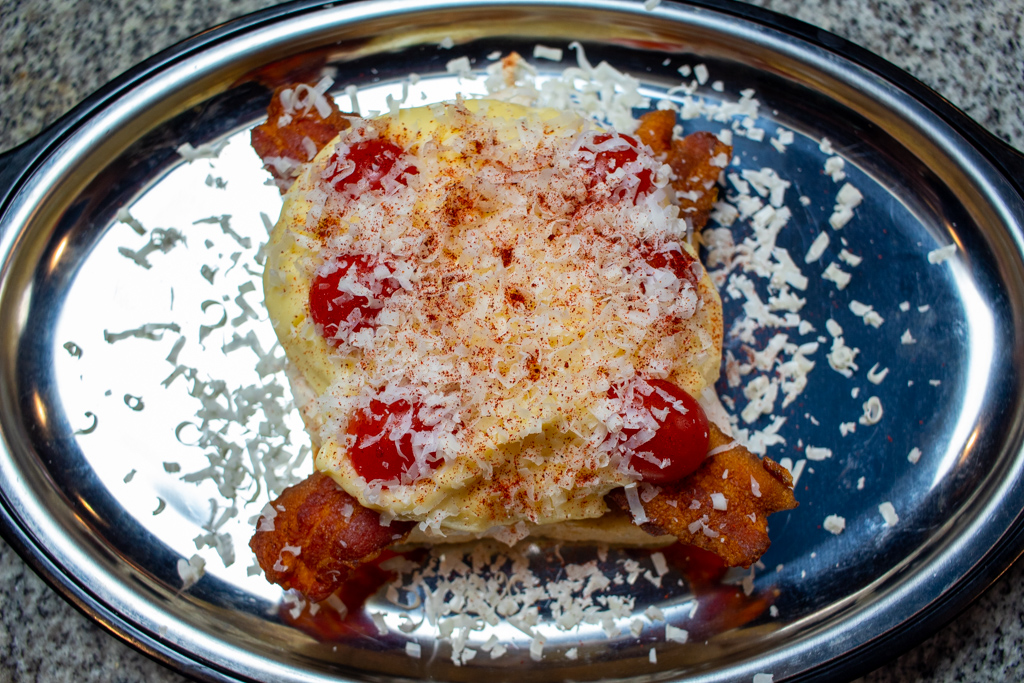
The broiler might make quicker work of it but I suppose the sauce and the turkey both need to be heated as well.
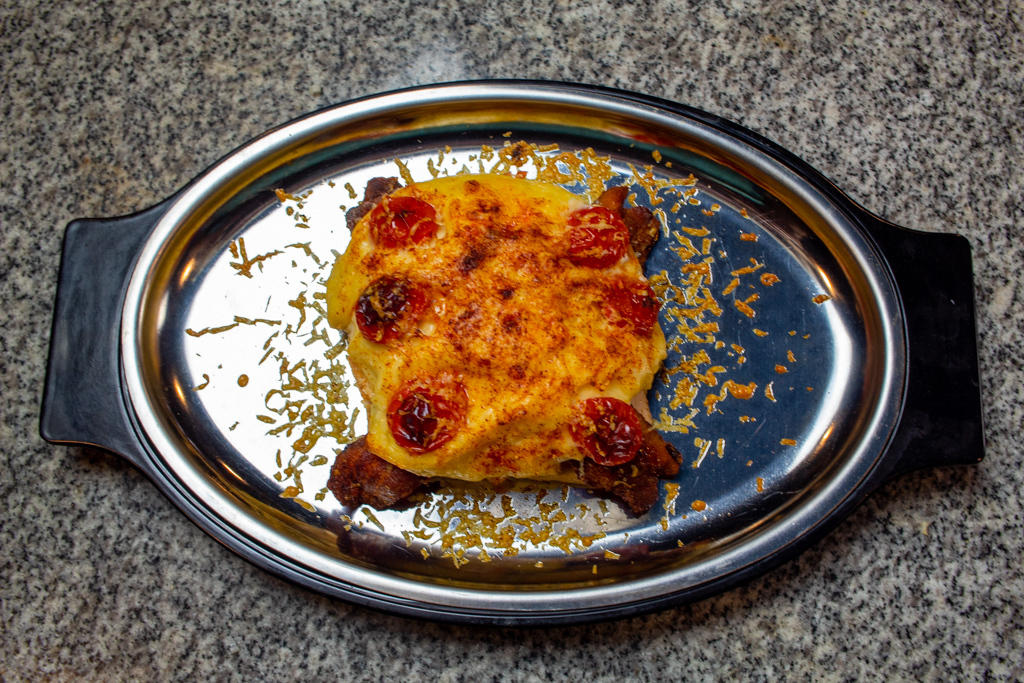
You might expect that, as the dish heats and the fats liquefy, the sauce might soften and begin to spread but in fact the opposite seems to happen. It retains its shape and sets into something almost like a pudding.
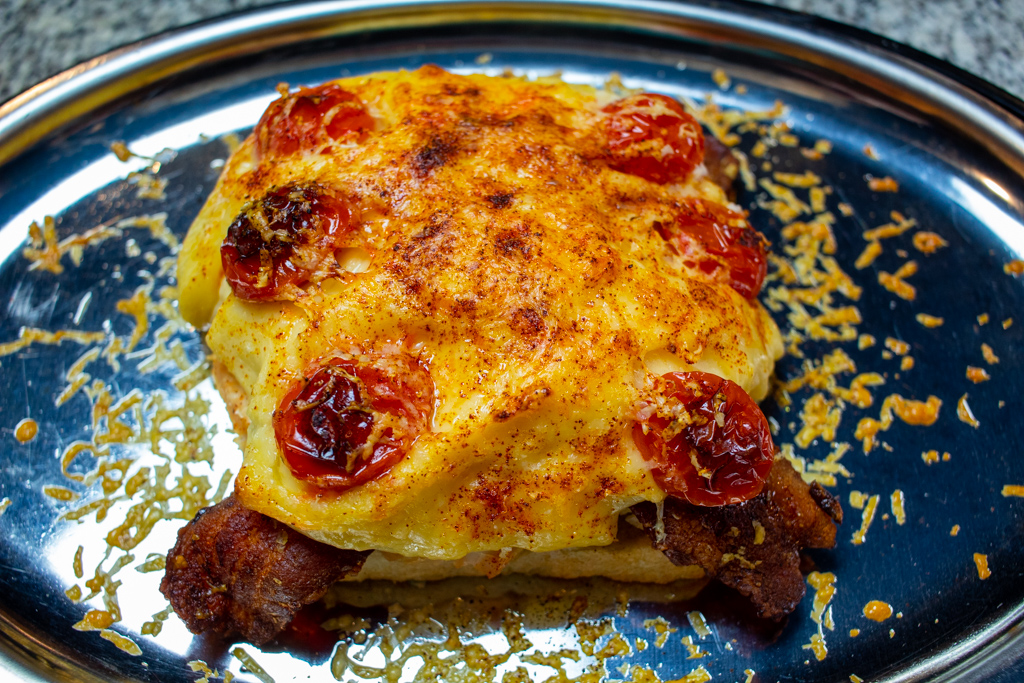
It’s not an easy sandwich to eat. Clearly a knife and fork is required here, and the longer cooking time has rendered both the bread and the bacon brittle. The sauce does less work gluing everything together than you might think–it adheres to itself more than it does to its surroundings, and when a piece falls away it can be picked up with one’s fingers without making a mess. Using preheated ingredients and then browning under the broiler would be a better choice.
The very thickness of the sauce though is a point in its favor–its presence, its solidity makes it less a sauce and more a partner of the turkey and bacon. Heated, and seasoned as it is by parmesan and paprika, its seeming identity crisis seems less relevant–it isn’t gravy, it isn’t a cream sauce or a cheese sauce or anything like that. It is a substantial topping in its own right, punctuated by the sweet juiciness of grape tomatoes, a softness blanketing the crisp bacon and bread beneath.
I tried it with a crustier Italian bread as well to much the same result.
Have I made something approaching the traditional Turkey Devonshire? I cannot say. Did I make something delicious? Certainly. Could it have been better? Of course. Perhaps one day I will visit Pittsburgh and try the real thing for myself–I would certainly be at least as willing to revisit this as a Primanti Bros sandwich.
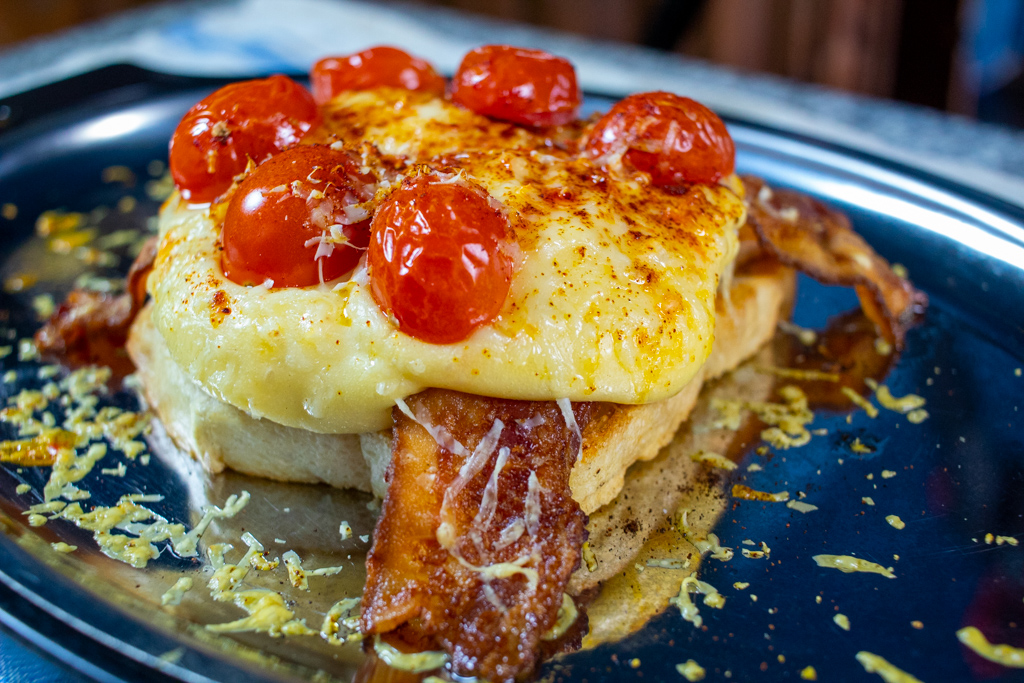
Until that day, I have no complaints. I can see this being an interesting alternate use of Thanksgiving leftovers as well–mix a little béchamel and cheddar into some leftover gravy, use stuffing instead of bread, maybe throw some cranberry sauce on there instead of those tomatoes. It could work.

I like sandwiches.
I like a lot of other things too but sandwiches are pretty great










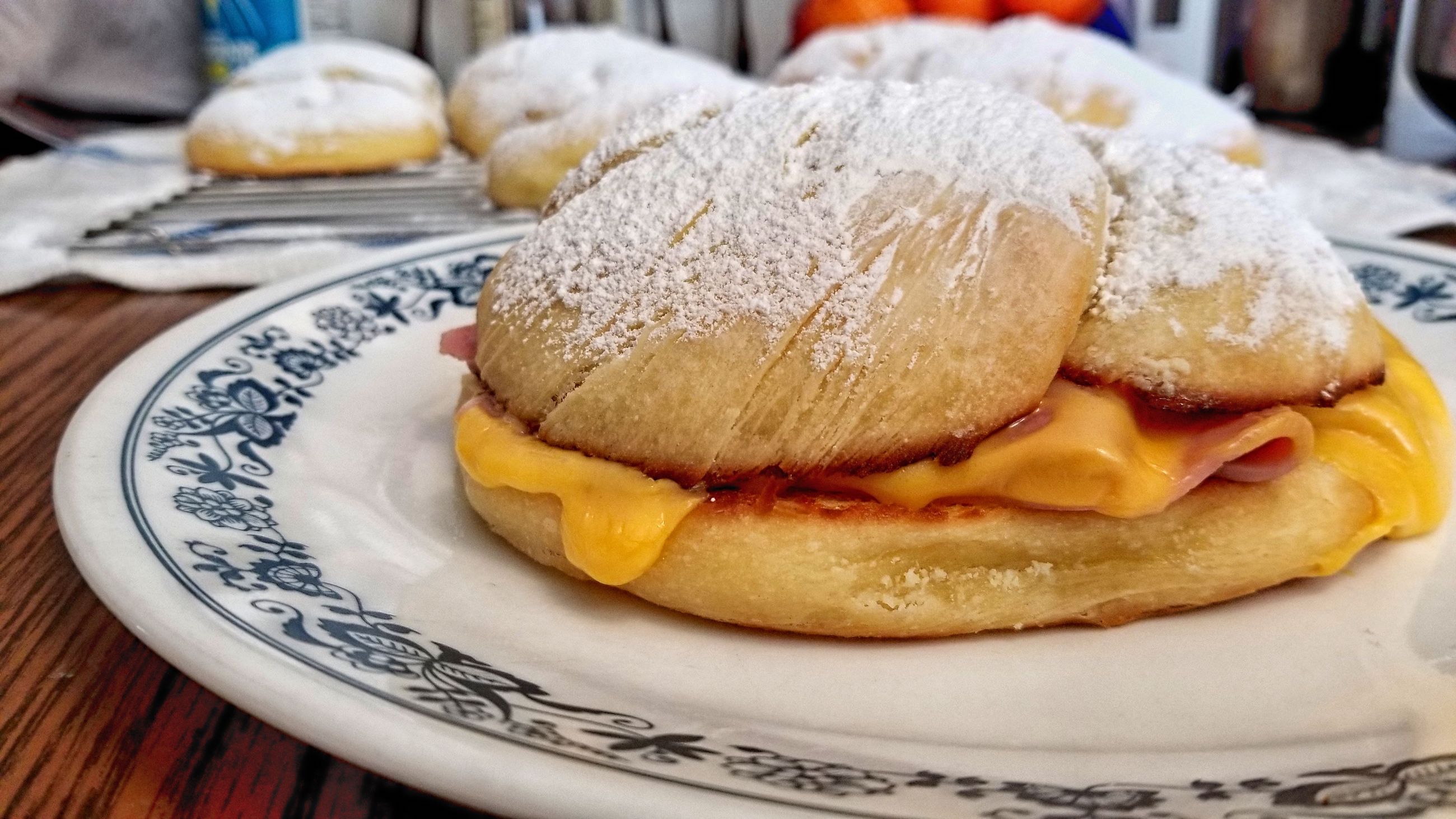






Recent Comments